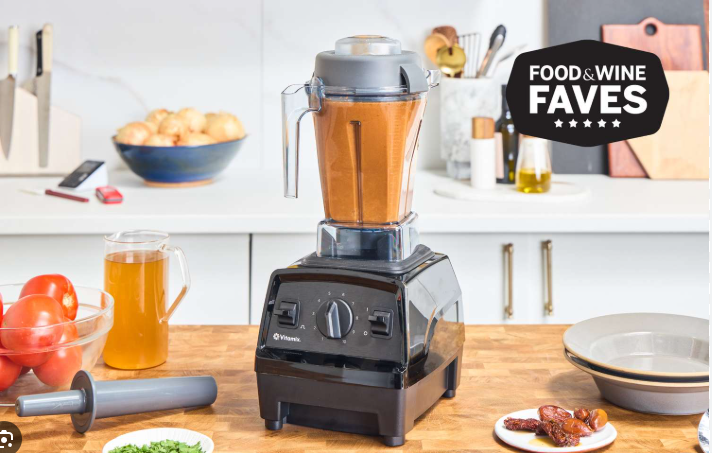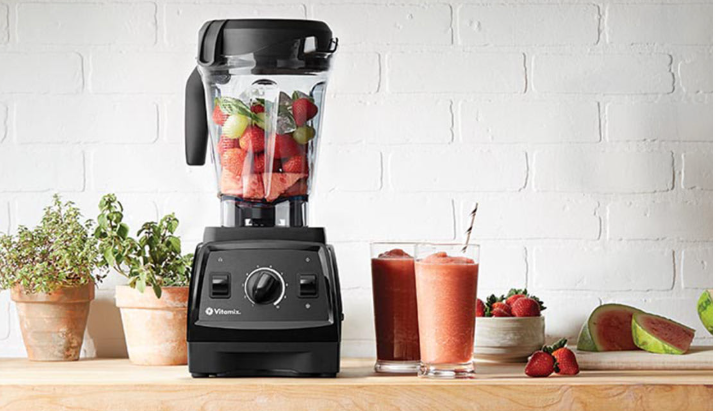Blenders are essential kitchen companions, transforming ingredients into creamy soups, smoothies, and sauces with ease. In 2025, mastering how to use a blender is a game-changer for home cooks, especially for crafting velvety soups that rival restaurant quality. This versatile tool saves time, locks in nutrients, and opens the door to creative blender recipes. Whether you’re a novice or looking to perfect your technique, this beginner-friendly blender user guide offers a clear path to success, focusing on soup-making while exploring other uses.
Modern blenders, like the Vitamix 750, boast powerful motors that blend and heat soups in minutes through friction, simplifying your cooking process. This guide covers everything you need to know about how to use a blender, from setup to blender troubleshooting. You’ll learn to prepare ingredients, choose the right settings, and maintain your appliance for long-term use. We’ll also share best blender tips to ensure smooth, safe blending, helping you select the perfect model for soups. By the end, you’ll see why a blender is a kitchen must-have and how it can elevate your meals. Let’s dive into this comprehensive blender user guide and start blending!

What You Need Before Using
Before exploring how to use a blender, a proper blender setup is crucial for safe and efficient operation, particularly when blending hot soups. Taking time to prepare ensures great results and prevents mishaps.
First, choose a blender suited for soups. High-powered models with 1,000+ watts, like the Blendtec Total Classic, easily handle fibrous vegetables like celery or carrots. Jar capacity matters—opt for 48- to 64-ounce jars for family-sized batches. For smaller portions or travel, a portable blender like the Nutribullet Pro is compact yet powerful. Immersion blenders, such as the Breville Control Grip, are ideal for blending directly in pots, minimizing transfers. Ensure compatibility with your power source—most blenders use a 120V outlet, while portable ones may rely on batteries.
Gather key accessories: a sharp knife, sturdy cutting board, and measuring cups for precise prep. A tamper, included with high-end models, helps move ingredients toward the blades for thick purees. Blender safety is paramount—check for a secure lid lock, non-slip base, and overheat protection. Refer to your manual; models like the Ninja Professional Plus offer soup presets for ease. Keep heat-resistant gloves or a towel ready for handling hot jars.
Prep your workspace by clearing counters and inspecting the blender for damage. Run a test cycle with water on low to check blade function. For blender safety, never blend boiling liquids—cool them to below 160°F to avoid splatters. Place the blender on a stable, dry surface, and beginners should start with cold ingredients to build confidence.
Understand your blender’s features, like variable speeds for smooth purees or pulse for chunkier textures. New to blending? Visit blender reviewz for soup-friendly model recommendations. Proper blender maintenance starts here, ensuring durability and top performance.
Step-by-Step Blending Guide
With your blender setup ready, let’s master how to use a blender with this detailed guide. Focused on soups but adaptable for tasks like how to make smoothie in blender or dips, these steps ensure silky results while prioritizing blender safety.
Preparing Ingredients
Quality blending begins with preparation. For soups, wash and chop vegetables into 1- to 2-inch pieces for even blending. For a creamy tomato soup, quarter tomatoes, dice onions, and mince garlic. Softer ingredients like cooked squash need less cutting, but tougher ones like parsnips may require brief steaming.
Measure liquids like broth or cream carefully, maintaining a 2:1 solids-to-liquid ratio for creamy soups. Never exceed the jar’s max line to prevent overflows, especially with hot mixtures. Add spices early, but reserve salt for final adjustments to avoid over-seasoning. Thaw frozen ingredients slightly to ease blending. Layer strategically: liquids first, then soft items, and greens or nuts last to prevent clumping. This 10-15 minute step is a core best blender tips practice for smooth soups.
Setting Up the Blender
Assemble your blender by securing the jar to the base until it locks—most models signal with a click or light. For immersion blenders, attach the wand and check the power connection. Load ingredients to no more than two-thirds capacity for soups to allow air circulation. Use the tamper through the lid’s vent if included.
Close the lid tightly, activate safety locks, and plug in. Start on low speed for chopping, especially for rustic soups. For models like the Vitamix 750, select the soup preset to blend and heat in 5-6 minutes via friction. Without presets, start low and increase gradually. This setup ensures safe, effective operation.
Selecting Modes
Modern blenders simplify how to use a blender with task-specific modes. For soups, use the “soup” or “hot blend” setting for smooth purees, as seen in the Ninja Foodi Cold & Hot Blender, which excels at both hot and cold recipes. For how to make smoothie in blender, choose low-to-medium smoothie modes. Pulse or ice crush settings work for chunky soups like minestrone, avoiding over-blending.
Refer to your manual—wrong modes can cause motor strain, leading to blender troubleshooting. Variable speed controls, like those on the Breville Super Q, allow texture customization, from coarse to velvety, enhancing your cooking with blender versatility.
Blending Process
Start on low for 10-15 seconds to chop, then switch to high for 45-60 seconds for smooth soups. Use the tamper to guide thick mixtures. For hot soups, add warm (not boiling) broth and blend on high for 5-7 minutes to heat through friction—a feature of models like the Blendtec. Monitor the motor’s hum; if it struggles, pause and redistribute ingredients.
For cooking with blender, blend raw for cold soups or cooked for hot ones. Try blender recipes like roasted carrot soup, adding cream post-blend for richness. Pour into a pot if further cooking is needed. This process delivers professional-grade soups with minimal effort.
Testing and Troubleshooting
Check for smoothness post-blending; if lumps remain, blend in 10-second bursts. Taste and adjust seasonings. For blender troubleshooting, address overheating by unplugging and cooling for 15-20 minutes. Leaks? Tighten lids or replace seals. Struggling blades? Chop ingredients finer or add liquid.
Avoid splashing with a vented lid or splatter guard. For portable blender users, ensure tight seals for travel. Need help? Check blender guide for model-specific solutions. These steps make blending second nature.
Tips for Successful Blending
Take your blending to the next level with these best blender tips, tailored for soups but versatile for all recipes. They ensure consistent results and extend your blender’s lifespan.
For blender maintenance, clean immediately after use. Fill the jar halfway with warm water and a drop of dish soap, blend on high for 30 seconds, then rinse. For immersion blenders, detach and wash under running water. Avoid dishwashers unless specified to protect seals. Dry thoroughly to prevent mold.
Blender safety is key: secure the lid, vent steam for hot soups, and keep hands clear of blades. Unplug when idle and wear aprons to avoid splatters during cooking with blender. Save energy by blending smaller batches and using pulse for quick tasks. Models like the Vitamix 750 heat soups without extra appliances, reducing power use.
Best practices include chopping ingredients small and adding liquids first for better flow. For soups, blend until steaming for immediate serving. Try blender recipes like broccoli cheddar for variety. Lubricate blades annually if recommended. For more ideas, visit blending tips. These habits deliver pro-level results.

Frequently Asked Questions
New to how to use a blender? These FAQs address common concerns, especially for soup-making.
What if my blender overheats? Thick soups can overtax the motor, triggering a shutoff. Unplug, cool for 20-30 minutes, and blend in shorter bursts. Prevent by respecting fill lines and using soup modes, as on the Ninja Professional.
How do I fix common issues? Leaks? Check lid seals or replace gaskets. Lumpy soups? Chop finer or add liquid. Won’t start? Verify the safety lock. Regular blender troubleshooting includes cleaning vents and checking blade sharpness—sharpen or replace as needed.
Do I need professional help? Most issues are DIY-fixable. For motor failures, contact the manufacturer; Vitamix offers long warranties. Seek pros only for electrical faults.
Is a portable blender good for travel? Yes, for small soup or smoothie servings. The BlendJet 2 is compact, rechargeable, and spill-proof, ideal for trips but best for single portions.
These answers help you blend with confidence.
Conclusion
Mastering how to use a blender unlocks a world of delicious, healthy soups and beyond. This guide simplifies setup, blending, and cleanup, emphasizing blender safety and efficiency. With quick prep and endless recipe options, blending is a skill that pays off.
Start creating blender recipes today and elevate your meals. For more inspiration, explore blending tips. Happy blending!